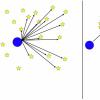So what is the most powerful telomerase activator anyway?
1.TAM818 @ 16% of that produced by HELA cells according to mRNA assay for HTERT gene expression (according to Bill Andrews); or
2. A triterpene rich fraction including Asiatic acid/asiaticoside @17% of HELA, according to this paper (REF1: DOI: 10.3892/mmr.2019.10614), measured by TRAP assay (TERT protein); or
3. The tetrapeptide Epitalon @ 100% HELA according to this paper (REF2: DOI: 10.1023/a:1025493705728) measured again by TRAP (protein) assay (and also immunohistological staining using antibodies, which also detects the protein)
What are we to make of these various claims? Who has the strongest telomerase activator really?
REF1 has not been replicated yet, though asiaticoside is known to be anti inflammatory (SMAD 7 activator, which downregulates TGF-B), is known to be beneficial for skin, and I have heard of one Longecity user who got longer telomeres apparently from taking gotu kola.
REF2 has not been replicated outside Russia, and in fact Bill Andrews states in a video interview that epitalon does not activate the Telomerase gene, in repeated experiments using his mRNA assay. It does not seem to be in question that epitalon increases endogenous production of melatonin, a powerful endogenous anti-oxidant, or that epitalon can increase telomere lengths in people (although I should note, even antioxidants can do that – REF4: DOI: 10.3892/ijmm.2019.4191, also here: https://www.certifie...cts-telos95.php)
Bill Andrews developed his assay after many years of painstaking manual tests until he found a hit and then used that as a positive control to create an automated assay. No one else can replicate his findings. But he has had several university departments independently confirm that Sierra Sciences’ first mRNA TERT hit was also positive in a TRAP assay.
This brings us to an interesting point. For activation of TERT you’d expect increased mRNA transcription, as measured by Bill, followed by translation into the telomerase protein, as measured by everyone else. Bill Andrews has stated sometimes they’d get a hit with the mRNA but not with the subsequent TRAP assay, possibly because some compounds both activate the gene and downregulate translation.
Bill Andrews’ TERT mRNA assay is proprietary and has been refined to be highly sensitive. Almost everyone else is relying on the TRAP assay. Is there anything wrong with that? One might think that if mRNA is a hit, TRAP might not be if the protein is not made for some reason. But if TRAP is a hit, then surely mRNA must also be a hit? Is there any circumstance where this is not the case?
Before we answer that question there is some housekeeping to do.
How accurate is a TRAP assay? I am no expert, but I’d say looking at this paper (REF5: https://pubmed.ncbi....h.gov/27182535/) that it can’t be very accurate. It relies on seeing how many telomere repeats are added to an artificial substrate, and then using PCR to amplify those repeats into something sufficiently long we can measure and compare. Presumably, the number of amplification cycles is critical and the same for all samples. But clearly one could just increase the number of cycles and make it appear you had a massive hit. I’d hazard a guess that there is at least some doubt over the TRAP assay. I’d also point out that References 1-3 have not be replicated (to my knowledge), which adds weight to my argument.
There are also more legitimate reasons why the TRAP assay might give you a hit without activating transcription from the gene. Any ‘spare’ telomerase mRNA could be translated into the telomerase protein in the right circumstances. The fact telomerase can be detected at all in human cells even though the gene is normally repressed shows that this is plausible. Bill Andrews has stated that during DNA replication any repression is temporarily removed. So, we’d expect some low level telomerase to be detectable in culture where cells are continually dividing. As we’ve discussed recently, antioxidants can help cells divide for longer – and some papers show this is due to a higher telomerase level being preserved for longer. This shows that at least at low levels, there is some flex in what you can do with a fixed level of telomerase. The same might be true one step earlier: the process of making telomerase from the mRNA. I’ve seen various studies showing Astralagus, Vitamin D, Broccoli extract, Rhodolia, Resveratrol, etc., all producing telomerase to some degree above the background level. But still at a very low level. I do not have access to Bill Andrews’ lab to know whether this is via mRNA upregulation or by increasing the amount of translation to the active protein form. But it might explain transient telomerase expression. I’ve read papers for example where resveratrol transiently caused telomerase expression in culture. Why transiently? It might be because resveratrol is one of those substances that uses up the already available gene product to make the protein. But once that mRNA is used up, translation fails. So again, I’d hazard a guess to say many purported telomerase activators have little effect on increasing gene expression.
See REF3: A critical role of nicotinamide phosphoribosyltransferase in human telomerase reverse transcriptase induction by resveratrol in aortic smooth muscle cells
Here, we report that resveratrol activates human nicotinamide phosphoribosyltransferase (NAMPT), SIRT4 and telomerase reverse transcriptase (hTERT) in human aortic smooth muscle cells. Similar observations were obtained in resveratrol treated C57BL/6J mouse heart and liver tissues.
See Fig 1: https://www.ncbi.nlm...port=objectonly
Note here they claim Resveratrol DOES increase mRNA levels, although Bill Andrews has said he has not been able to replicate this (personal communication), although he did say he takes it anyway ‘just in case’.
Although to some the argument that most ‘telomerase activators’ might not actually be increasing gene expression could be depressing, it also offers us an opportunity. Because if for example, Epitalon is actually only upregulating translation (and I do not know if this is the case or not), then it means we have a way of enhancing the effects of a genuine telomerase activator like TAM818. That way we’d be increasing mRNA from the gene and also upregulating its translation into telomerase. Doing this we might make the most telomerase possible. I am speculating now, but I find it interesting that the pathway described in the paper above (REF3) involves NAMPT, so likely influences the oxidative/reductive balance of the cell, so may be influencing telomerase via the anti-oxidant effect. The oxidative/reductive balance of cells also influence circadian rhythm (as anyone who has taken NMN can attest). Taking this another step, epitalon dosing increases melatonin production, and melatonin is a very important endogenous antioxidant also involved in regulating senescence through multiple pathways, and the circadian rhythm. Melatonin will be explored in a future post.
Edited by QuestforLife, 08 April 2021 - 03:25 PM.





















































